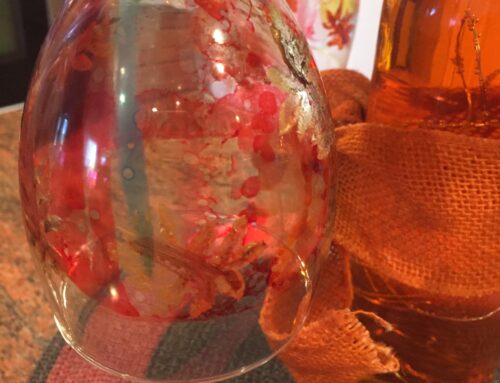You can make your own rosewater and rose oil.
If you received Valentine’s Day Roses, they’re surely fading by now, but it’s really a shame to have to just throw them away. There’s hope! If you didn’t receive roses on Valentine’s Day, here’s a great excuse to purchase some!
Rosewater
Rosewater is a naturally rose-scented water. You don’t see it a lot because even though it is easy to make, it is expensive to buy. It’s also kind of a throwback to another era before artificial everything was available to be used in perfumes and room fresheners. Many people have never heard of it, and many who have, have never seen it. It adds a special, refined touch to life and can be used in everything from cosmetics or herbal products to a refreshing, pleasant spritz from a spray bottle on your skin, or even a light room-freshening scent.
Here’s how to make it at home.
You’ll need rose petals from a bunch of roses. How many really depends on the number of roses you have. You’ll want to slosh the buds gently through soapy water or a fruit or veggie cleansing solution to remove what chemicals that you can from the petals. Rinse them gently but well, then remove them from their flowers and see what you’ve got. A few cupsful of rose petals will be a good amount. It is okay if the petals you use are wilted.
You’ll want to use distilled water for rinsing the petals and more distilled water for creating the rose water.
Put your petals in a pot large enough to accommodate them and place it on the stove. Pour distilled water into the pot until it is just deep enough to cover the petals. Heat on low until the rose fragrance begins to intensify and the petals begin to fade. Extreme temperatures will do more harm than good, so watch to ensure you’re not boiling.
Pour the petals and water through a colander and catch the water that passes through in a bowl. Let the water cool. Pour it into sterile (boiled or steamed) glass bottles or jars. Store in a dry, cool, dark place.
Rose oil
Rose oil is used in beauty products, the scent is soothing, relaxing and satisfying. It has a pleasant sensation on the skin and many more benefits are suggested in websites and articles.
Several details are important when creating something you’ll be using on your skin. In the best-case scenario you’ll have organic roses or at least chemical-free. Let’s face it, that’s not too likely.
Since water is the enemy of all things oil, you’ll want to wash/rinse your roses as though you were making rosewater (above), and dry the petals with a lint-free cloth probably a day or two before making your oils. You want no surface water in on the petals you use.
Choose a good quality oil for your project. These are “carrier” oils (that carry the beneficial substances from the roses to she skin diluting any substances which might otherwise irritate the skin). Some of the best choices of oils would be: fractionated coconut oil which is high in Vitamin E and antioxidants; sweet almond oil, which is tolerated and absorbed pretty well by skin; Jojoba oil, grapeseed oil, or even olive oil work well.
Choose some good glass jars and make sure they are very clean.
Add several inches of water to a pan. Bring the water to a boil and then set it aside.
Inspect your roses to ensure petals are dry and free of mold/mildew/contaminants. Make sure you don’t leave any water on them.
Add some oil (about a cup) to a jar.
Remove several cupsful of petals from the roses and crush the petals in a bowl or empty glass jar. Damaging them this way allows them to release their scent and any oils more quickly. Place the petals in the jar, cover the jar and place them it the warm water in the pan.
If you have more petals and enough jars, repeat the process until you have no more space for jars in your panful of warm water. Place the pan with jar(s) in it in a warm place and leave the setup alone for 24 hours or so.
Remove the jars and dry them off. Tighten lids (if necessary), turn jars over and back several times, then store in a dark place. Each day or two turn the jars over and back a few times and return them to the shelf in the dark place. At the 4-week mark, strain the oil to remove the rose petals, discard the petals, return the oil it’s jar, reseal and return the jars to the dark place.
The internet is a wonderful place to find uses, use sound judgment…but just having the jars around available for me to open and enjoy a burst of heavenly rose fragrance is enough to make me interested in making these!






